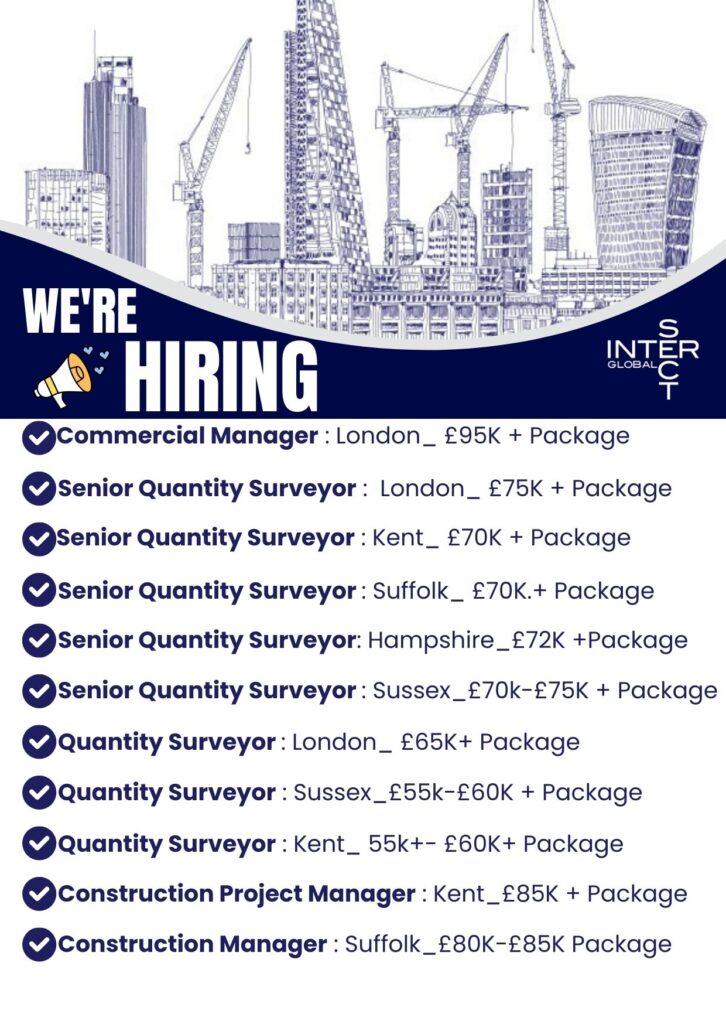The civil engineering and construction landscape in London is entering a pivotal phase. As we move further into 2025, the sector- particularly within utilities and infrastructure- is navigating a complex but opportunity-rich environment. Bolstered by government investment, digital transformation, and a strong project pipeline, the year ahead promises both growth and disruption.
This article highlights key developments, challenges, and emerging trends shaping the industry and includes some lesser-known facts to spark curiosity and conversation across the sector.
Key Growth Drivers in 2025
1. Strong Global Expansion
The global civil engineering and construction market is projected to grow by over 70%, opening new pathways for firms in the UK to diversify and scale.
2. Government-Led Infrastructure Investment
The UK continues to channel capital into major infrastructure programs aimed at stimulating long-term economic growth. This includes significant upgrades in transportation, utilities, and energy.
3. Technology-Driven Transformation
Digital tools like Building Information Modeling (BIM), digital twins, automation, and AI-driven analytics are being widely adopted to enhance efficiency, productivity, and planning precision.
4. Improved Economic Conditions
With declining interest rates and moderating inflation, borrowing becomes more viable for large-scale public and private investment.
5. Expanding Project Pipeline
According to Glenigan’s May 2025 report, the UK’s top construction projects include a substantial share in civil engineering, positioning London as a key hub for national development.
Ongoing Challenges
1. Geopolitical & Trade Pressures
Global instability continues to impact supply chains and material costs, introducing uncertainty to project delivery timelines.
2. Evolving Safety Regulations
Enhanced scrutiny following recent events has led to more rigorous building safety protocols and remediation obligations.
3. Shifting Government Policy
The UK Spring Statement outlined fiscal changes that impact infrastructure funding, placing pressure on developers and contractors to adapt swiftly.
4. Legislative Reform
Major infrastructure initiatives—akin to the US IIJA—are driving legislative changes across transport, housing, and utilities sectors.
Strategic Priorities for London-Based Firms
1. Infrastructure Modernisation
Projects in transport, energy, and digital infrastructure remain central to the UK’s long-term economic strategy.
2. Sustainability Alignment
In line with the Construction 2025 roadmap, efforts are intensifying to reduce carbon emissions, manage resources efficiently, and adopt green construction techniques.
3. Digital Integration
Tech adoption is no longer optional. Firms are now expected to fully integrate digital solutions to remain competitive.
4. Talent Attraction & Upskilling
With an ageing workforce and talent shortages, retaining experienced professionals and investing in apprenticeships is critical for sector resilience.
Major London Projects Underway
- London Gateway Port Expansion (£3 billion): The largest active construction project in the UK, designed to boost trade capacity.
- Gatwick Airport Northern Runway (£2.2 billion): A significant milestone in aviation and infrastructure growth.
- Fen Lane Data Centre Campus (£1.7 billion): A cutting-edge digital infrastructure initiative within the growing London Data Freeport.
Fun & Lesser-Known Facts – London Construction (May 2025)
Even industry professionals might be surprised by these:
- London’s Clay = World-Class Tunnelling
The unique consistency of blue London clay makes it one of the most ideal materials for underground engineering globally. - An Ageing Workforce
The average UK construction worker is over 45, creating a pressing need for new talent and experienced mentors like Myra Carino to bridge the skills gap. - BIM Usage Still Limited
Despite years of digital strategy talk, over 60% of UK firms still operate at BIM Level 1, lacking true data integration. - Concrete Moves > People Moves
During upgrades, the London Underground transports more tonnes of concrete than passengers—mostly overnight! - 75%+ of Construction Waste is Recycled
Construction is now one of London’s top recycling industries—outperforming household waste recycling by a wide margin. - Flood Defence Design Is Hidden Infrastructure
From pumping stations to sluice gates, civil engineers ensure flood resilience in London with little public recognition. - HS2 = Lighter, Greener Trains
HS2’s high-speed trains are being built with carbon fibre-reinforced components, making them lighter and more energy-efficient.
Final Thoughts
The London civil engineering and construction sector is primed for sustained expansion, supported by investment, innovation, and a forward-thinking approach to sustainability and technology.
However, it’s also a space that demands adaptability, collaboration, and knowledge-sharing—especially across disciplines and generations.
Let’s keep the conversation going:
- Which 2025 trend or project excites you most?
- How are you embracing change in your own organisation?
- What hidden fact surprised you most?
Feel free to connect, comment, or share—and let’s continue building a future that’s not just structurally sound, but smart, green, and inclusive.
#Construction2025 #LondonInfrastructure #CivilEngineering2025 #DigitalConstruction #HS2 #QuantitySurveying #CommercialManagement #ConstructionManagement #GreenConstruction #Utilities #Water #Energy #Power #HotJobs2025 #ConstructionTrends #UKInfrastructure #SmartCities












